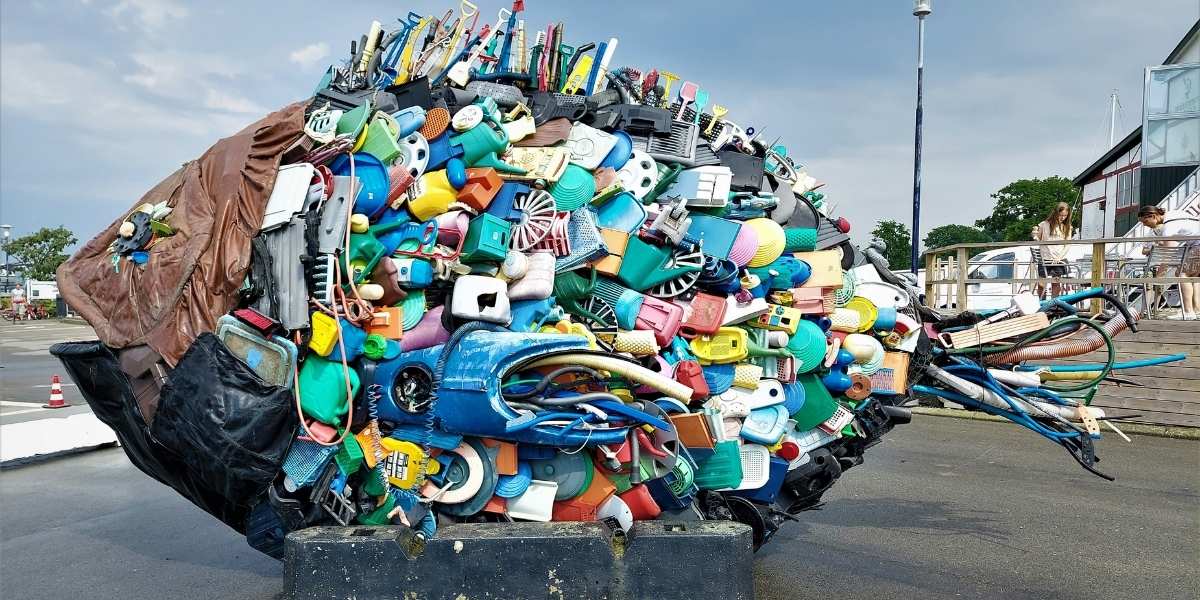In recent years, sustainability has become a major focus in the fashion industry, with more designers and consumers seeking alternatives to traditional, environmentally damaging production methods. One of the most innovative solutions to the industry’s waste problem is upcycling, where discarded materials are transformed into high-quality, fashionable pieces. Upcycled fashion not only reduces waste but also breathes new life into old garments and materials, creating unique, one-of-a-kind pieces. This article explores the rise of upcycled fashion, its environmental and creative benefits, and how designers and consumers are embracing this trend to create upcycled chic.
Read Also: Why Retro Sneakers Are Back and Better Than Ever
What is Upcycled Fashion and Why Is It Gaining Popularity?
Upcycled fashion involves taking old, discarded garments or materials and repurposing them into new, wearable designs. Unlike recycling, which typically breaks down materials to create something new, upcycling retains the original structure of the materials, making them more valuable and reducing the need for raw materials. This process can involve transforming vintage clothing, using fabric scraps, or even repurposing items such as old upholstery or industrial materials into high-end fashion pieces.
The popularity of upcycled fashion has surged due to increasing awareness of the environmental impact of the fashion industry. The global fashion industry is one of the largest polluters in the world, responsible for significant water waste, chemical use, and carbon emissions. As consumers become more conscious of the effects of “fast fashion” and the waste it generates, they are turning to sustainable alternatives, and upcycled fashion is at the forefront of this movement.
Celebrity endorsements, the rise of eco-conscious brands, and the growing trend of conscious consumerism have all contributed to upcycled fashion’s mainstream popularity. Designers, who were once hesitant to embrace repurposed materials, are now leading the charge, creating stunning collections that showcase the creative potential of upcycled materials while adhering to principles of sustainability.
How is Upcycling Reshaping the Fashion Industry?
Upcycling is reshaping the fashion industry by challenging the traditional cycle of production and consumption. In the world of high fashion, designers are using discarded fabrics, vintage garments, and waste materials to create new collections that are both stylish and environmentally responsible. This shift has led to the emergence of a new luxury category—upcycled fashion, where materials that would have otherwise ended up in landfills are being transformed into exclusive, one-of-a-kind pieces.
One of the most notable impacts of upcycling is its ability to reduce waste. According to some estimates, the fashion industry generates over 92 million tons of waste each year, much of which ends up in landfills. By reusing and reimagining waste materials, designers are significantly lowering the amount of textile waste produced, helping to create a more sustainable fashion ecosystem. This approach also encourages creativity in design, as upcycling allows designers to experiment with materials that may not be typically associated with high fashion.
In addition to waste reduction, upcycling has led to the rise of slow fashion, a movement focused on producing fewer, higher-quality garments that are designed to last. Unlike fast fashion, which encourages the purchase of inexpensive, mass-produced clothing that quickly falls apart, slow fashion celebrates craftsmanship and the longevity of clothing. Upcycled fashion aligns perfectly with this ethos, offering consumers the chance to invest in high-quality, sustainably sourced items that have been thoughtfully produced.
The Environmental Benefits of Upcycled Fashion
Upcycled fashion offers significant environmental benefits, making it a key player in the push for a more sustainable fashion industry. By repurposing materials that would otherwise be discarded, upcycled fashion reduces the need for new resources, such as cotton or synthetic fibers, which require large amounts of water, chemicals, and energy to produce. This process lowers the environmental footprint of each garment, helping to preserve natural resources and reduce pollution.
The carbon footprint of upcycled fashion is also lower compared to new garment production. Traditional garment manufacturing involves transportation, energy consumption, and chemical treatments, all of which contribute to greenhouse gas emissions. By contrast, upcycling involves reusing existing materials, which significantly reduces the need for these energy-intensive processes.
The use of pre-consumer waste—such as leftover fabric from manufacturers—further minimizes the environmental impact. Upcycled fashion also reduces the amount of textile waste that ends up in landfills. In fact, it’s estimated that the fashion industry is responsible for 10% of global carbon emissions, with millions of tons of clothing discarded each year. By shifting to upcycled materials, we can help curb this waste and move toward a circular fashion model that prioritizes reuse and recycling.
How Are Designers Incorporating Upcycling Into Their Collections?
Designers are increasingly embracing upcycling as a way to create unique, sustainable, and visually stunning fashion. One approach involves remixing vintage garments, such as old denim jackets, T-shirts, or dresses, into modern, high-fashion items. For example, designers may take a collection of old denim jeans and sew them into a contemporary, couture-style dress, giving new life to the once-discarded materials.
Another popular technique is patchwork. By piecing together small fabric scraps from various sources, designers create intricate, one-of-a-kind garments. This method not only adds texture and visual interest to pieces but also emphasizes the beauty of repurposed materials. Some designers also incorporate upcycled accessories, such as handbags made from repurposed fabric or jewelry created from old buttons or broken chains.
The creative possibilities for upcycled fashion are endless, and designers are pushing boundaries with their innovative use of waste materials. For example, eco-conscious fashion brands like Re/Done and Patagonia are pioneers in the field, producing items that are not only stylish but also sustainable. These designers prioritize environmentally responsible materials and ethical manufacturing practices, ensuring that their collections are both trendy and kind to the planet.
How Can Consumers Embrace Upcycled Fashion?
Consumers have a crucial role to play in the success of upcycled fashion. As awareness about the environmental impacts of fast fashion grows, more individuals are turning to sustainable alternatives, and upcycled fashion is at the forefront of this movement. There are several ways consumers can embrace this trend and incorporate upcycled fashion into their wardrobes.
Read Also: How K-Pop Dance Is Redefining Worldwide Movement Trends
First, shopping with purpose is key. Consumers should seek out brands that prioritize sustainability and upcycling in their collections. Many fashion brands now offer upcycled clothing lines, allowing consumers to purchase stylish garments that have been made from repurposed materials. Additionally, second-hand shopping and vintage clothing are growing in popularity, providing consumers with access to unique, pre-loved items that can be upcycled into new creations.
Consumers can also take an active role in upcycling their own clothing. With a little creativity, old clothes can be transformed into new, fashionable items through simple alterations or DIY projects. Whether it’s turning an old sweater into a chic bag or reworking an outdated pair of jeans into a trendy skirt, upcycling offers an opportunity to refresh the wardrobe without contributing to waste.








